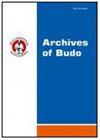剑道不同打击时上肢的反应时间和肌肉激活模式
IF 1.5
3区 医学
Q3 SPORT SCIENCES
引用次数: 8
摘要
剑道是决策运动的一个例子,涉及到竹剑(竹剑)快速交替的防御和进攻动作。这项研究的目的是反应时间和肌肉激活模式在两种类型的剑道打击。材料与方法:剑道运动员(n=7)、其他运动员(n=7)和久坐不动的参与者(n=7)分别进行10次“Men”打击(目标高度1.65 m)和10次“Kote”打击(目标高度1.15 m)。使用肌电(EMG)记录双侧肱二头肌、双侧肱三头肌和右侧尺侧腕屈肌的肌肉活动。结果:剑道运动员和其他运动员的反应时间与久坐不动的参与者相似,但反应时间更短。剑道运动员在两项任务中表现出不同的肌肉激活时间,而其他运动员和久坐的参与者在时间上没有差异。剑道运动员和非剑道参与者(其他运动员和久坐不动的参与者)的肌电信号大小不同。结论:在决策运动中,神经肌肉控制的差异与运动经验有关,而与反应时间无关。本文章由计算机程序翻译,如有差异,请以英文原文为准。
Response time and muscle activation patterns of the upper limbs during different strikes in kendo
Background Kendo is an example of a decision-making sport and involves rapidly alternating defensive and offensive movements of a shinai (bamboo sword). The aim of this study was response time and muscle activation patterns during two types of kendo strikes. Material & Methods:: Kendo athletes (n=7), other athletes (n=7), and sedentary participants (n=7) performed 10 “Men” strikes (target height, 1.65 m) and 10 “Kote” strikes (target height, 1.15 m). Muscle activity of the bilateral biceps brachii, bilateral triceps brachii, and right flexor carpi ulnaris muscles was recorded using electromyography (EMG). Results: The kendo and other athletes had similar response times and shorter response times than the sedentary participants. The kendo athletes exhibited different timing of muscle activation onset between the two tasks, whereas the other athletes and sedentary participants exhibited no differences in timing. The EMG magnitude differed between kendo athletes and non-kendo subjects (other athletes and sedentary participants). Conclusions: In decision-making sports, differences in neuromuscular control, but not in response times, are associated with athletic experience.
求助全文
通过发布文献求助,成功后即可免费获取论文全文。
去求助
来源期刊

Archives of Budo
SPORT SCIENCES-
CiteScore
2.80
自引率
47.60%
发文量
0
审稿时长
>12 weeks
期刊介绍:
Archives of Budo is an international peer reviewed journal publishing articles on various aspects of the sports sciences covering education and research in martial arts and combat sports, and related areas like biomechanics, kinesiology, medicine, psychology, sociology, technologies of sports equipment, research in training, selection, performance, survival, and other interdisciplinary perspectives.
Archives of Budo editors endorse the principles embodied in the Helsinki Declaration and expect that all research involving humans has been performed in accordance with these principles. All human studies must have been approved by the investigator''s Institutional Review Board. A copy of the relevant documentation should be included with the manuscript. Furthermore Archives of Budo follows the ICMJE''s Recommendations for the Conduct, Reporting, Editing and Publication of Scholarly Work in Medical Journals.
Archives of Budo provides free, immediate and permanent online access to the full text of all articles distributed under the terms of the Creative Commons Attribution Non-commercial License http://creativecommons.org/licenses/by-nc/4.0), which permits use, distribution, and reproduction in any medium, provided the original work is properly cited, the use is non-commercial and is otherwise in compliance with the license.
 求助内容:
求助内容: 应助结果提醒方式:
应助结果提醒方式:


